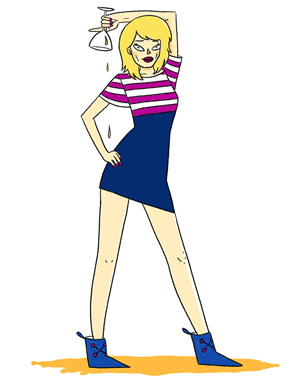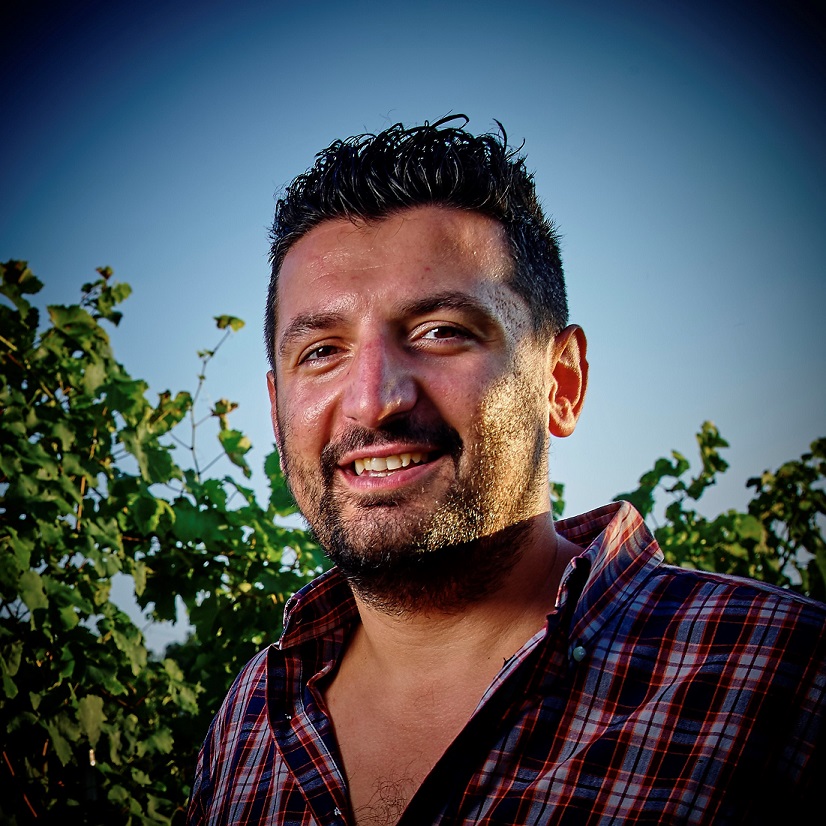
“We have a circle of bio-diversity in the vineyard,’ says Leopardo Felici, “the lake, the vines and the forest. The lake, in the middle of the vineyard, cools the vines when it is hot. The forest harbours insects and birds. These help maintain the health of the vineyard. We respect the land where we work.”
A move to organic farming was among the first changes Leopardo made when he took over the family estate Andrea Felici in the Marche. It was founded by his grandfather, but until 2003 the family grew the grapes to sell, only starting to bottle fifteen vintages ago.
Leopardo’s father wisely sent his son away to gain experience. He went to London to work for Gordon Ramsay, perhaps not surprisingly given that food and wine are inseparable in Italy. “My father said ‘to make wine, you must decide on a style you want to make.’ I didn’t believe in Chardonnay. I wanted to make Verdicchio, but not in the traditional way.”
Quick varietal inhale
Verdicchio – derived from verde or green – is the principal white grape variety of the rolling hills of the Marche, where it has been around for a good 600 years. DNA evidence shows it to be part of the Trebbiano family grown throughout Italy, although ampelographers believe it to be indigenous to the Marche. It’s also related to Greco, from which most Italian white grape varieties descend. In Veneto it goes by the name Trebianno de Soave. Long thought to be its closest cousin, DNA evidence has show it to be identical.
Trebbiano is not a variety famed for its quality. It’s a highly acidic grape with little aromatic intensity and easily over crops to make thin, acidic wines of meagre interest. In its Verdicchio guise it is quite able to churn out 100hl/ha. However… in the right hands, in the right place and given yields are controlled, in common with Chardonnay a rather classier neutral variety, it can be a perfect conduit for the terroir.
It is used to make a variety of styles in the Marche, from sparkling wine to sweet passito wine. High acidity is useful at both ends of the spectrum. At a quality conscious estate, it can reach its finest expression as a dry wine with notes of almonds and lemons, but the style can differ depending upon which, of the two DOC zones, the Verdicchio is grown, as each has somewhat different climates and soils.
The Marche nestles against Umbria and is influenced by the Apennine mountains. Verdichhio di Matelica is found on the Western side. It is a valley boarded by mountains to the East and West and its higher elevation makes it the cooler climate and the dense soils produce more mineral wines. While Verdicchio di Jesi lies on the other side of the hills, on flatter land open to the influence of the Adriatic sea 20km away. The coastal clay soils here are underlaid with limestone, a soil created from the seabed. It’s warmer, but benefits from breezes from the Adriatic. Typically the wines are more fruit-driven, but also have a certain salinity. They have not always had the best reputation. Despite the rather impressive sounding DOC Verdicchio dei Castelli di Jesi – the wine can be anything but… turning out over-copped, lean wines with mean acidity. Verdicchio di Matelica has a better reputation for quality. However, stay with me.
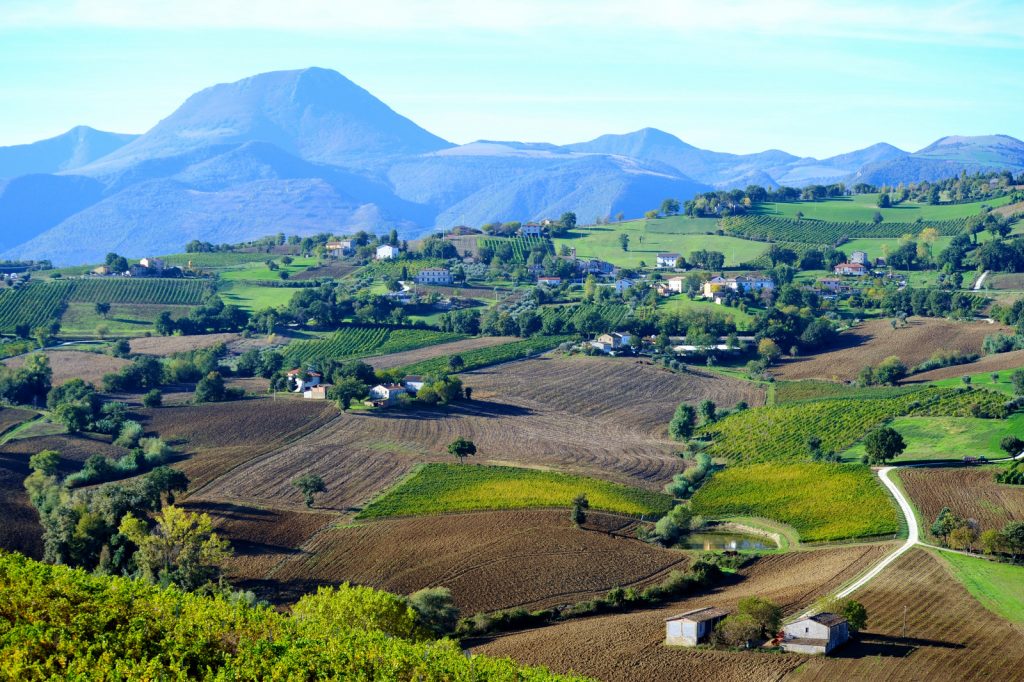
“We are in the highest part of Castelli di Jesi on a hill between Apiro and Cupramontana,” explains Leopardo, “where we have some of the influence of the mountains and the Adriatic.” The vines are planted from 200 to a lofty 500m on the foothill slopes of Mount San Vicino. “We have a strong diurnal here and so we have good acidity. The East coast of Italy is colder, than the West, and everything has good acidity here, including the olive oil. The temperature can drop from 25 centigrade in the day to just 5 degrees at night.” That’ll preserve the acidity.
In the vineyard Leopardo trains the Verdicchio on guyot and in his top vineyard, selects the bunches next to the trunk to make his top wine Cantino della Figura. In the colder seasons he breaks the stems of the bunches further from the trunk to concentrate the vine’s energy. The bunches further from the trunk are used for his ‘estate’ Verdicchio Classico Superiore dei Castelli di Jesu. As already remarked, to achieve some body in the wine and balance the high acidity, yields have to be restricted and this is clearly done here.
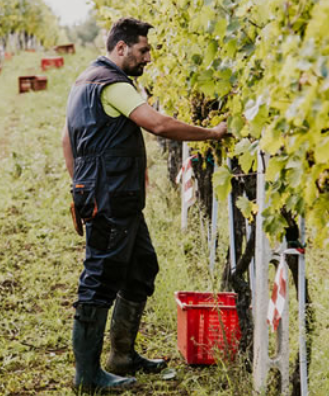
Verdicchio It is typically aged in oak – traditionally large barrels, but also barriques, however Leopardo dislikes oak influence and chose concrete and steel to hone his style. He makes crisp, pure, well delineated mineral wines. He uses some skin contact “from the skin I get some aromatics.’ The wine is fermented in stainless steel and matured in concrete.
The law dictates that 85% Verdicchio is required for both Verdicchio di Matelica and di Jesi, but in practice this is usually 100%, as it is at Felici.
The first wine, an estate wine, is made and aged in stainless steel, while Il Cantino della Figura comes from older, lower vines planted in the 1950s by his grandfather. It is a single vineyard of 1.5 hectares. This wine has some skin contact and is aged for longer on the lees in concrete.
With an absence of new oak to flatter the fruit, there is no where to hide. And no hiding places is needed. These excellent, straight, fresh saline wines are a pure expression of the soil and the meso climate.
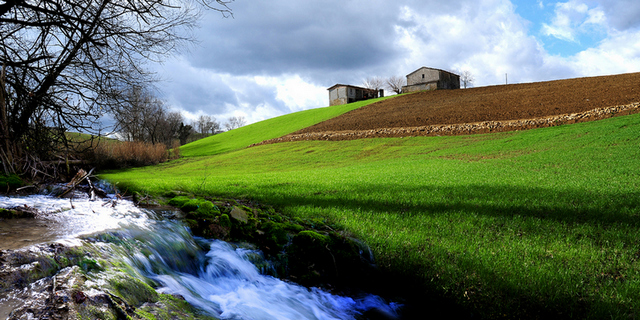
And now for some wine. The first two are the current vintage
2018 Verdicchio Classico Superiore dei Castelli di Jesu
This is a fresh and breezy expression of the appellation and the grape, which here shows a delicious almond and lemon character. There is a hint of just ripe apricot in the aromatics. It has a good bitter note at the end – a light bite.
2017 Verdicchio ‘Vigna’ Il Cantino della Figura, Reserva dei Castelli di Jesi
Firmer structure and tight core showing richer apricot skin character. The finish is straight, persistent and mineral. I would give it some time in bottle to show its full potential. 2022-30
Older vintages
I tasted the following vintages a couple of years ago now, but have included them to illustrate that Verdicchio, in the right hands from the best terroir has the potential to age.
2015 Verdicchio ‘Vigna’ Il Cantino della Figura, Reserva dei Castelli di Jesi
2015 was a sunny and plentiful vintage. Rather floral. This is slightly rich and lightly rounded with notes of apricot and honeysuckle. It is fresh, but with a textural richness and on the finish minerality is silky.
2013 Verdicchio ‘Vigna’ Il Cantino della Figura, Reserva dei Castelli di Jesi
The 2013 bears some relation to the 2010 vintage. Lightly spicy aroma. Plenty of energy on the palate. Pure fruit, neat edges and fresh acidity. It is crisp and pure with focused mineral at the end.
2012 Verdicchio ‘Vigna’ Il Cantino della Figura, Reserva dei Castelli di Jesi
A mid September harvest like 2004. It was a hot season like 2011, but while 2011 had sufficient rain through the summer, 2012 had drought conditions in August and the vines blocked. Hence at harvest the acidity was still high.
Slightly herbal aroma. It is straight with nicely clipped edges, glassy and slightly grassy on the palate with fresh acidity. The finish is bright and lively with a sappy minerality and a touch of dill frond to the flavour.
2011 Verdicchio ‘Vigna’ Il Cantino della Figura, Reserva dei Castelli di Jesi
This is much riper than 2011 and 2010. Notes of greengage. Lightly generous in the mid palate with softer, but still fresh acidity. Beginning to show more evolved nutty characters. It is a touch warm on the finish maybe.
2010 Verdicchio ‘Vigna’ Il Cantino della Figura, Reserva dei Castelli di Jesi
Delicious evolution on the 2010 with toasted almonds, lemons and violets. There are savoury biscuity and parmesan notes. The balance and intensity is particularly good. The acidity is fresh and there is plenty of depth. It is pure and energetic. The finish is long and salty.
The Nose would happily tuck away some Il Cantino della Figura in her cellar. These are wines that are easily enjoyed young. They make no demand to be cellared… on the contrary. However with 8 or 10 years they take on a different personality, developing complex nuances you might not expect from the fresh minerality of the young wine. So I’d advise… go slow and take your time.
The wines of Andrea Felici illustrate the true potential of this terroir. If you have been deterred by a cheap, thin, tart and insipid Verdicchio Castelli di Jesi, try these wines and have your tastebuds tickled in a good way.
Stockists
Lea and Sandeman
2018 Verdicchio Classico Superiore dei Castelli di Jesu £17.95
2017 Il Cantino della Figura, Verdicchio Classico Superiore dei Castelli di Jesu. £32.95


